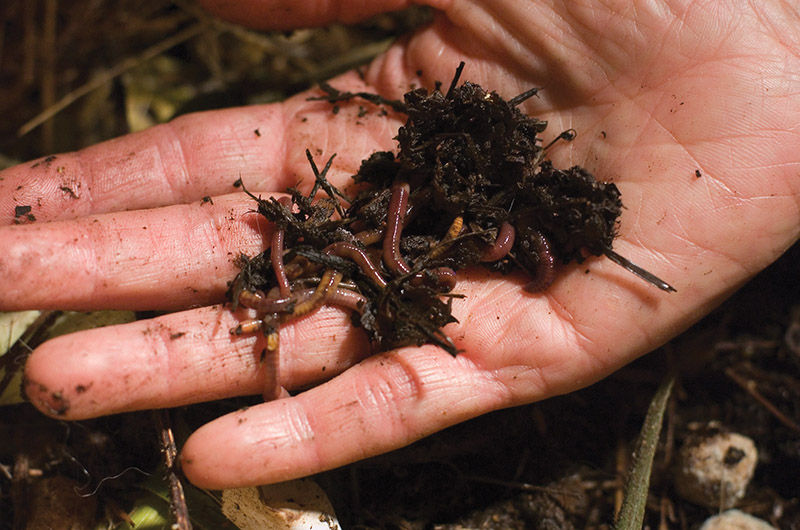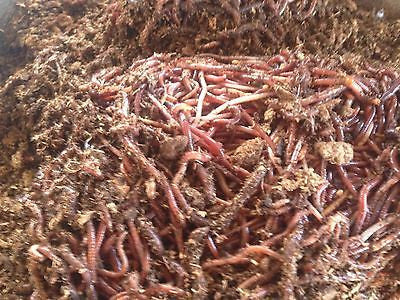Discover Red Wigglers with Free Shipping for Organic Gardening and Composting
Discover Red Wigglers with Free Shipping for Organic Gardening and Composting
Blog Article
The Ultimate Overview to Taking Care Of Red Wigglers in Your Yard
Caring for red wigglers in your garden is a necessary element of sustainable composting techniques that can substantially improve soil health and wellness and fertility. Understanding their particular environment requirements, nutritional preferences, and upkeep demands is vital for fostering an efficient vermicomposting atmosphere.
Recognizing Red Wigglers

Red wigglers are characterized by their reddish-brown coloration and fractional bodies, which can expand up to 4 inches in length. They have a high reproductive rate, producing cocoons that include numerous embryos, substantially raising their population in ideal habitats. Where to buy red wigglers. Their physiology allows them to tolerate different moisture degrees, although they thrive in moist problems, ideally in between 60 ° F and 80 ° F.))

Establishing the Environment
Developing an ideal environment for red wigglers is crucial for maximizing their composting performance and general health. A suitable environment consists of aspects such as bed linen, moisture, and temperature level materials. Red wigglers thrive in a damp, dark environment with a temperature level variety of 55 to 77 degrees Fahrenheit. It is very important to keep an eye on these problems closely, as extreme temperatures can impact their activity and reproduction.
When choosing a container, pick one that is well-ventilated to allow for air blood circulation while avoiding excess moisture loss. Plastic bins, wood boxes, or specialized worm containers are all effective choices. The base of the container should have drain openings to avoid water buildup, which could bring about anaerobic conditions harmful to the worms.
Consistently check the dampness degree of the bedding, and add water as required to preserve the ideal wetness. By developing these conditions, you will create a successful setting for your red wigglers, encouraging reliable composting and much healthier worm populaces.
Picking the Right Food
Choosing the proper food for red wigglers is important for their health and composting efficiency. These worms grow on a well balanced diet that includes a range of organic materials. Suitable food resources include fruit and vegetable scraps, coffee grounds, crushed eggshells, and shredded paper. It is necessary to prevent meats, milk items, and oily foods, as these can attract insects and produce unpleasant smells in the composting setting.
Red wigglers prefer food that is cut or shredded, as this boosts surface area and advertises more reliable digestion. Additionally, introducing food in percentages stops overfeeding, which read what he said can bring about anaerobic problems harmful to worm health and wellness. Checking the worms' consuming habits can also offer understandings; if the food is taken in rapidly, consider slowly raising the amount.

Maintaining Moisture and Temperature Level
A site web balanced diet is just part of the equation when it involves ensuring the wellness of red wigglers; maintaining appropriate moisture and temperature is just as essential. Red wigglers flourish in a moist atmosphere, ideally between 70-85 ° F(21-29 ° C) This array supports their metabolic processes and boosts their capacity to disintegrate natural matter efficiently.
To maintain ideal dampness degrees, the bed linen should be kept damp, resembling a wrung-out sponge. Insufficient dampness can cause dehydration, triggering stress or also death in the worms. Alternatively, too much moisture can create anaerobic conditions, which might harm the worms and create unpleasant smells. Regularly examining the wetness content and adjusting as essential is crucial for a flourishing worm populace.
To mitigate temperature extremes, take into consideration using insulation for outdoor bins or relocating the container to a temperature-controlled or shaded area. By thoroughly handling both moisture and temperature, you create an optimum setting for red wigglers, improving their efficiency and general health.
Harvesting Compost and Treatment Tips
Gathering compost from your red wigglers is a satisfying procedure that not just advantages your garden however likewise enhances the performance of your worm container - Where to buy red wigglers. To start, choose a harvesting technique that matches your configuration-- whether it's the tray, pyramid, or typical container technique. Each method permits for the separation of garden compost from worms properly
As soon as you're all set to harvest, focus on timing. Ideally, wait until the compost is dark, crunchy, and earthy-smelling, normally after three to six months of food digestion. To gather, you can gently dig deep into the garden compost from one side of the bin, allowing worms to webpage migrate to the uninterrupted side. You can make use of light to urge worms to burrow much deeper, making it much easier to collect the completed compost.
Care pointers after harvesting include replenishing your worm bin with fresh bed linens and food scraps to maintain a healthy and balanced worm populace. Make sure that the dampness and temperature degrees stay ideal, and routinely check for any type of signs of distress among the worms. By adhering to these methods, you'll guarantee a lasting cycle of garden compost manufacturing that enhances your garden.
Final Thought
In conclusion, the effective care of red wigglers demands a detailed understanding of their habitat, dietary requirements, and ecological problems. Establishing an appropriate environment with proper ventilation and dampness levels is necessary for promoting their health and performance.
By developing these conditions, you will certainly create a growing setting for your red wigglers, motivating efficient composting and healthier worm populaces.
The pH degree of the food is another important variable; red wigglers thrive in a slightly acidic to neutral environment.A balanced diet plan is only component of the equation when it comes to guaranteeing the health of red wigglers; keeping appropriate moisture and temperature level is equally essential. By very carefully handling both wetness and temperature level, you produce an optimal environment for red wigglers, boosting their productivity and general health and wellness.
Collecting compost from your red wigglers is a rewarding procedure that not only benefits your yard yet also boosts the efficiency of your worm bin.
Report this page